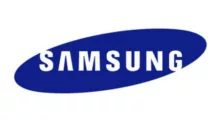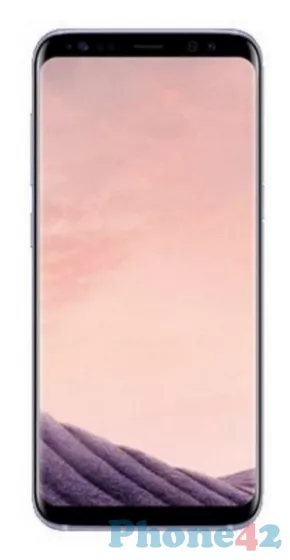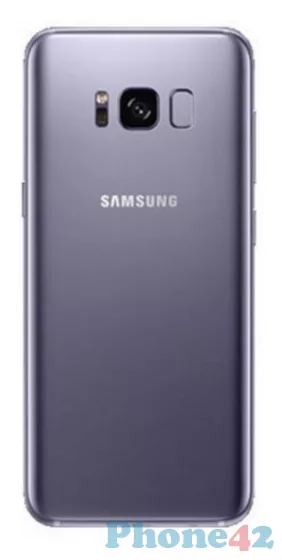
Samsung Galaxy S8: Pros and Cons
Samsung announced the launch of the Galaxy S8 smartphone in 2017. The manufacturer is offering this smartphone with 5.8 inch Super AMOLED display, Qualcomm Snapdragon 835 MSM8998 SoC, and 4 GB of RAM. It comes with Android OS v7.0 (Nougat) out of the box, and a Li-Ion 3000 mAh, non-removable battery. The phone comes with a high-quality AMOLED display. This smartphone has a single camera on the back (12 MP, 4032 x 3024 px, autofocus, optical image stabilization). Is this phone worth its price? Hopefully, it will become clear by the end of my review.
Table of Contents
- Samsung Galaxy S8 specifications
- Weight, dimensions, colors
- System, chipset, performance
- Display type, size, resolution
- Memory, storage
- Cameras, flash
- Connectivity, network, wireless
- Battery type, capacity, charger
- Features, sensors, specials
- Verdict, pros and cons
This article shares our personal experiences and thoughts about using the Samsung Galaxy S8 smartphone. We hope to offer helpful insights to others interested in this device. The specifications below are from the official manufacturer data, but we also consider user reviews. If you've seen any mistakes or things missing in these specifications, please let us know.

Samsung Galaxy S8 specifications
| Brand | Samsung |
|---|---|
| Name | Galaxy S8 |
| Model | SM-G950 |
| Release date | 2017 |
Weight, dimensions, colors
| Dimensions | 5.52 x 2.84 x 0.29 inch |
|---|---|
| Colors | black, gold, rose-gold, silver, white |
| SIM type | Nano SIM |
Smartphones use a Nano SIM as a small chipcard for a subscriber identity module (SIM).
System, chipset, performance
| OS version | Android OS v7.0 (Nougat) |
|---|---|
| SoC | Qualcomm Snapdragon 835 MSM8998 |
| CPU | Octa-core, Quad-core 2.35 GHz Kryo, Quad-core 1.9 GHz Kryo |
| GPU | Adreno 540 |
The Samsung Galaxy S8 comes with Android OS v7.0 (Nougat) out of the box. The Android operating system uses the Linux kernel as its foundation. It includes a user interface, middleware, and many pre-installed applications. It's a powerful Qualcomm Snapdragon 835 MSM8998 octa-core processor. It can handle complex tasks and run many applications. Qualcomm's Snapdragon processors work with Adreno GPUs. The processors are designed for the GPUs.

Display type, size, resolution
| Display type | Super AMOLED |
|---|---|
| Screen size | 5.8 inch |
| Resolution | 1440 x 2960 px |
| Multitouch support | yes |
The 5.8 inch phone comes with AMOLED display. Smartphones use the AMOLED, which is a type of OLED display. The 5.8 inch display make this smartphone pocket-friendly. The size of the screen is measured diagonally, from corner to corner.
Memory, storage
| RAM | 4 GB |
|---|---|
| Internal storage | 64 GB |
| Memory card slot | microSD |
The Samsung Galaxy S8 comes with 4 GB of RAM, which is considered to be sufficient for most users' needs. The needed RAM amount for good performance depends on factors. These include the OS, the apps, and the services you use. 64 GB of storage is usually seen as good for a smartphone. It should be enough for most users. You can expand the internal storage (64 GB) with a compatible microSD card.

Cameras, flash
| Main camera | 12 MP, 4032 x 3024 px, autofocus, optical image stabilization |
|---|---|
| Flash | Dual LED |
| Selfie camera | 8 MP |
The single camera can be enough for many smartphone users. It depends on their photography needs and preferences. The main camera of Galaxy S8 has optical image stabilization (OIS). It counters camera shake.
Connectivity, network, wireless
| GSM 2G bands | 850 / 900 / 1800 / 1900 |
|---|---|
| Network coverage | 2G / 3G / 4G |
| Wi-Fi | Wi-Fi 802.11 a/b/g/n/ac |
| Bluetooth | v5.0, A2DP |
| GPS | A-GPS, GLONASS |
| NFC | yes |
| FM radio | no |
| USB | USB Type-C |
| Headphone | 3.5 mm jack |
Worldwide, people use 4G networks. They have become the standard for mobile networks in many countries. This phone like all modern smartphones, is capable of connecting to Wi-Fi networks. The Galaxy S8 smartphone is capable of connecting to Bluetooth devices. This phone has a built-in GPS. The Galaxy S8 has a built-in NFC chip, which allows it to support various NFC applications and services. The 3.5 mm headphone jack allows you to connect wired headphones or earphones to the device.
Battery type, capacity, charger
| Type | Li-Ion 3000 mAh, non-removable |
|---|
The Li-Ion 3000 mAh, non-removable battery gives the smartphone a good battery backup. The Li-ion is a low maintenance battery. It does not need periodic full discharge. The battery of Galaxy S8 isn't removable without voiding the warranty.
Features, sensors, specials
| Sensors | accelerometer, barometer, compass, fingerprint, gyroscope, hall, heart rate, light, proximity |
|---|---|
| Specials | Corning Gorilla Glass 5, Dual SIM, Fast charging, Wireless charging, Certified IP68 dustproof and waterproof |
Today, smartphones come with many sensors. They help make the user experience better. The Galaxy S8 smartphone has an accelerometer. The Galaxy S8 phone has a fingerprint scanner. The light sensor detects the level of light in the environment. Dual SIM is great for businesses. They want to give staff a device with separate numbers and bills for personal and business use. IP68 rated smartphones often have extra structure or seals. These protect against water and dust.
The fast charging technology comes in handy when you need quick juice on your device. Wireless charging uses an electromagnetic field. It transfers energy between two objects through electromagnetic induction. Corning Gorilla Glass is a type of chemically strengthened super-glass.
Verdict, pros and cons
Every phone has its strengths and weaknesses, and this Samsung phone is no exception. As with any device, there are aspects that shine and others that fall short. By examining both sides, we can paint a complete picture of what this phone has to offer. Let's explore its standout features and areas for improvement. Remember, this is just my opinion, and yours might be different.
Pros
- Super AMOLED display
- adequate memory
- microSD slot
- optical image stabilization (OIS)
- Dual SIM support
- IP68 certified protection
- wireless charging
- Corning Gorilla Glass shield
Cons
- single camera setup
- no 5G support
- low-capacity battery
Please let us know if you find incorrect information or something isn't working. Also, tell us if you have a suggestion for improvement.
 I'm Lucas Bradley, the founder of the Phone42.com site. I love technology, especially smartphones, and I've been working with tech stuff for more than 20 years. This means I've seen a lot of changes and have learned a bunch about what makes a good phone. On Phone42.com, I look at all kinds of phones. They can be from big, well-known companies or new ones trying to make their mark. I want to help people understand what's new and cool in the world of smartphones, in a way that's easy to get.
I'm Lucas Bradley, the founder of the Phone42.com site. I love technology, especially smartphones, and I've been working with tech stuff for more than 20 years. This means I've seen a lot of changes and have learned a bunch about what makes a good phone. On Phone42.com, I look at all kinds of phones. They can be from big, well-known companies or new ones trying to make their mark. I want to help people understand what's new and cool in the world of smartphones, in a way that's easy to get.